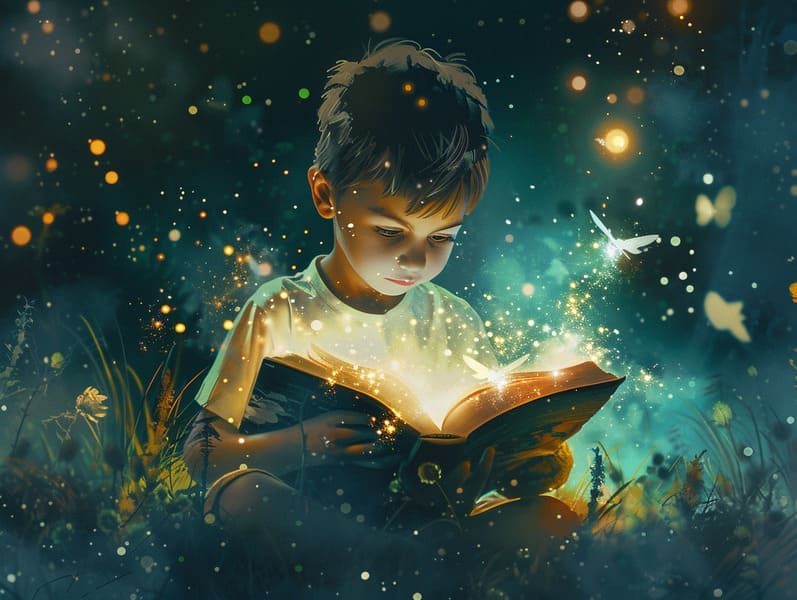The Emergence of Online Fairy Tales with Their Continued Fascination.
The Emergence of Online Fairy Tales with Their Continued Fascination.
Blog Article

Classic fairy tales have ancient roots. These tales have been conveyed from one generation to the next well before they were ever documented. They developed from a variety of civilizations, including Eastern traditions. They were initially shared among adults, often carrying themes and messages reflective of the societal norms and beliefs of the time.
The renowned Brothers Grimm, the two Grimm brothers, were among the first to collect and release many of these beloved stories. Their collection, "Grimm's Folk Tales," included stories like "The Story of Cinderella," "Hansel and Grethel," and "Snow-White and Rose-Red," which have since become pillars in the world of children's fairy tales. Similarly, Hans Andersen's delightful tales, such as "The Mermaid's Tale," and "The Story of the Ugly Duckling," have enchanted hearts worldwide, solidifying their place in the pantheon of famous fairy tales.
Even though they are old, these stories remain as applicable as ever, especially as nighttime stories for kids. These whimsical stories are now available in different formats, including vividly illustrated books, charming animations, and digital fairy tales.
Their lasting appeal can be ascribed to several whimsical characteristics:
Ethical Lessons: Ancient fairy tales often offer important moral lessons. Fairy tales like "The Story of the Boy Who Cried Wolf" teach the value of sincerity, while "The Tortoise and the Hare" highlight the qualities of persistence and unassuming nature. These stories offer the young clear distinctions between truth and falsehood, forming their moral compass in a kind yet lasting way.
Empathy and Understanding: Traditional fairy tales frequently include heroines facing challenges and problems, fostering young listeners to empathize with their struggles and rally behind their triumphs. For instance, "The Tale of Beauty and the Beast" shows us the significance of appreciating inner worth to appreciate the true being of a person, building empathy and recognition.
Cultural Recognition: Many fairy tales are interwoven with the cultural contexts from which they came. Engaging with these fairy tales can provide delightful insights into different beliefs, nurturing a sense of world appreciation and perception.
Imagination and Creativity: The mythical elements in old find it here fairy tales—supernatural elements—fuel children’s imaginations. These fairy tales transport readers to extraordinary realms, activating fantasy-filled thoughts and a sense of enchantment that endures a lifetime.
Timeless fairy tales are not only mesmerizing but also informative. They function as captivating tools in building various thinking and feeling skills in young readers. When classic fairy tales are told out loud, they develop language proficiency by introducing new words and sophisticated sentence structures. This practice also advances auditory perception and attention, as the young listen intently, anticipating to see what happens next.
Furthermore, conversing about the themes and characters of traditional fairy tales can strengthen evaluative skills and intellectual skills. Young readers learn to find patterns, foresee events, and figure out cause and effect. These discussions also ease young ones say their thoughts and feelings, boosting their emotional intelligence.
In today’s electronic age, the prevalence of online storybooks has made these tales more reachable than ever. Websites and applications make available large libraries of popular fairy tales that can be enjoyed or played anytime, anywhere. Fairy tales spoken are particularly widespread, providing an fun way for children to immerse in these mesmerizing stories. Read-aloud books and read-to-me stories bring characters and settings to life, often supplemented by charming sound effects and tunes that boost the storytelling journey.
The timeless allure of old fairy tales lies in their ability to adjust to new eras while staying true to their core messages. Contemporary adaptations of these fairy tales often show more representative characters and modern settings, making them relevant to today’s audience. However, the underlying themes of bravery, kindness, and equity remain unchanged, continuing to influence audiences of all ages.
Fairy tales also offer a sense of serenity and knowability. They supply a well-ordered narrative with a transparent beginning, middle, and end, often winding up with the ending of conflicts and the triumph of virtue over vice. This regularity can be soothing for young readers, spreading a sense of invariability in an ever-changing world.
Traditional fairy tales continue to enchant and instruct new generations, maintaining their captivation and impact in modern society. As bedtime stories for kids, they introduce a perfect blend of charm and enlightenment, encouraging moral values, empathy, and creativity. The existence of web-based fairy tales and the commonness of fairy tales recited make sure that these old tales remain reachable to new generations.
By keeping and conveying these tales, we continue to appreciate the rich tapestry of narrative artistry and cultural heritage. Whether you are perusing a beautifully illustrated book, experiencing a digital collection, or playing an audiobook, the magic of Grimm's fairy tales is always within reach. These tales teach us of the consistent force of storytelling and its ability to bond us across epochs and places.
Even if you are reading a gorgeously illustrated book, browsing a web collection, or listening via an audio story, the magic of children's fairy tales is always within reach.
These narratives reveal of the immortal nature of storytelling and its ability to bind us across time and space, establishing a link that charms and informs alike.